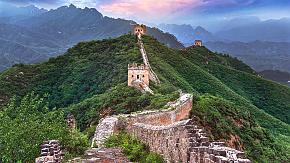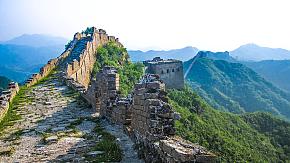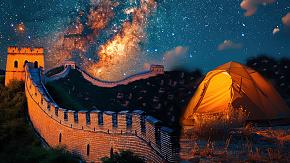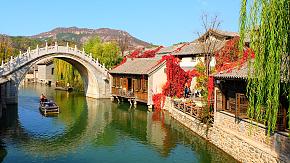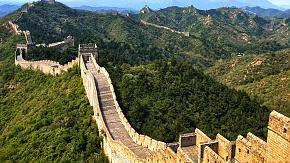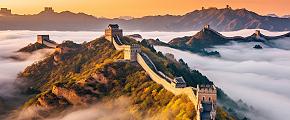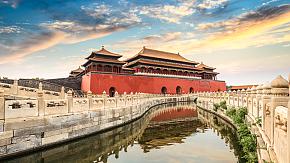Great Wall in Beijing: Top Sections, Transportation & Best Time
Almost every tourist will mark the Great Wall as a must-see attraction on their trip to China. But where is it? Actually, though the Great Wall spans over 13,000 miles on the land of China, many parts are ruined and not able to be visited. Beijing is the best place to see the Great Wall since some of the most famous and accessible sections are here. If you want to have a seamless trip to the Great Wall in Beijing, please read on to get practical information.
How to Get to the Great Wall from Beijing
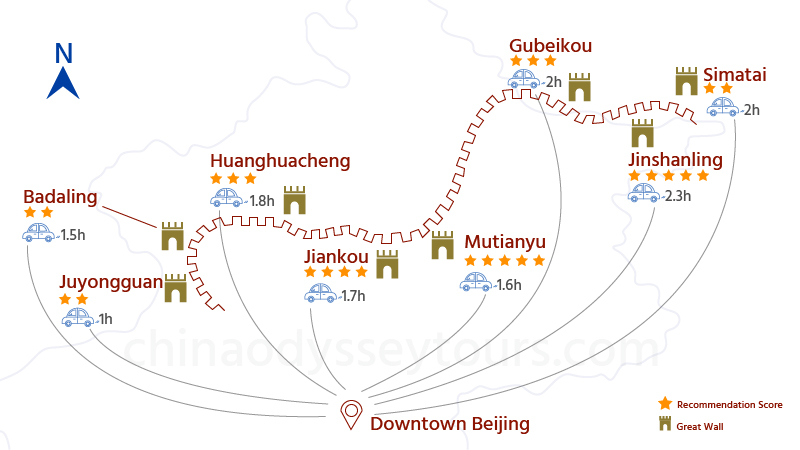 Map of the Great Wall Near Beijing
Map of the Great Wall Near Beijing
The most convenient way to visit the Great Wall near Beijing, as we mentioned above, is by car, which takes about 1 to 2.5 hours, depending on the section. You can take a taxi or rent a car with a driver. But of course, if you travel with us, you don't need to worry about anything, as we will arrange a private car with an experienced driver to take you directly to your destination. Mutianyu, popular among overseas travelers, usually takes 1.5 hours to reach, while the closest sections, Badaling and Juyongguan, are about 1 hour away. Jinshanling takes approximately 2.5 hours. Public transportation is also an option but is more complicated, requiring transfers and familiarity with bus routes.
Top 8 Sections of the Great Wall in Beijing
1. Badaling Great Wall: Most Famous Section
Badaling Great Wall was the first section to be restored and opened to the public in 1957. With stunning mountain views and well-preserved watchtowers, Badaling offers a breathtaking glimpse into Chinese history and defensive architecture.
Located approximately 70 kilometers northwest of Beijing's city center, it is also the easiest-accessible section. You can get there by car, by bus, or even by high-speed train from Beijing in a short time.
With its stunning view, easy transportation, and various modern amenities, Badaling becomes the most visited section of the Great Wall of China by both domestic and overseas visitors. However, it means you may meet long lines, especially during the peak season.
2. Mutianyu Great Wall: Kids and Senior Friendly
 Mutianyu Great Wall
Mutianyu Great Wall
Unlike the bustling Badaling, Mutianyu Great Wall is a quieter, yet equally impressive section about 70 kilometers northeast of Beijing. This well-preserved portion boasts beautiful scenery with lush forests and offers a chance to walk on a restored piece of history.
Mutianyu not only has cable cars for going up and down but also offers tobogganing for thrilling experiences. Most paths in this section are stable, so it is highly recommended for those who are kids or seniors.
3. Simatai Great Wall: Beautiful at Night
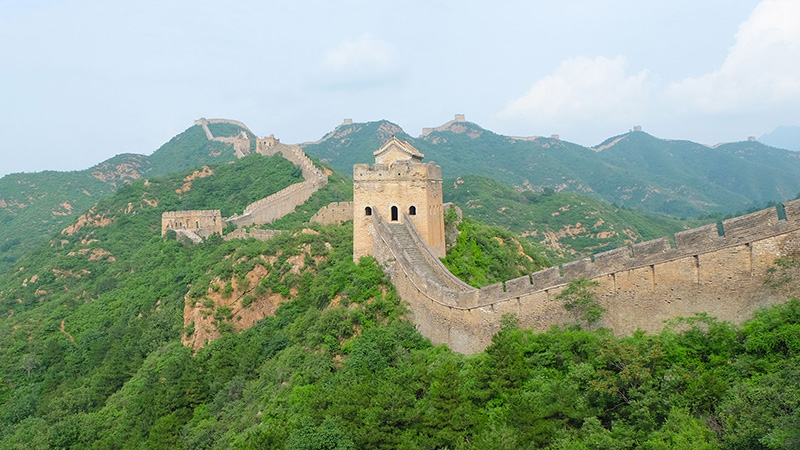 Simatai Great Wall
Simatai Great Wall
The Simatai Great Wall is located 120 kilometers (74 miles) from Beijing. It is often described with the following three words: perilous, diverse, and peculiar. Simatai offers a unique experience compared to the more famous Great Wall, retaining its unrestored charm and attracting hikers and history buffs seeking a more adventurous experience. It's also a great place to see the Great Wall at night, overlooking the Gubei Water Town at the foot of the Great Wall, which sparkles at night.
4. Jinshanling Great Wall: Best for Hiking and Photography
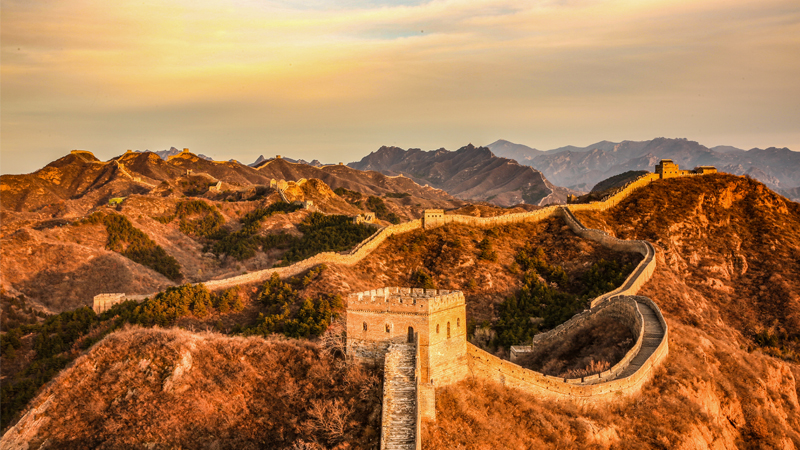 Scenery of Jinshanling Great Wall
Scenery of Jinshanling Great Wall
Jinshanling offers a perfect blend of tranquility and historical immersion. We would rate the scenery and architecture 5.0/5.0, and it's probably even better in autumn. Although it is a bit far from the center of Beijing (140 km, 2.5-3 hours drive), it is a place worth visiting, especially for those seeking an authentic Great Wall hiking experience. Here, you can explore both the unrestored and restored Great Wall, meandering through mountains.
5. Jiankou Great Wall: Most Wild Section
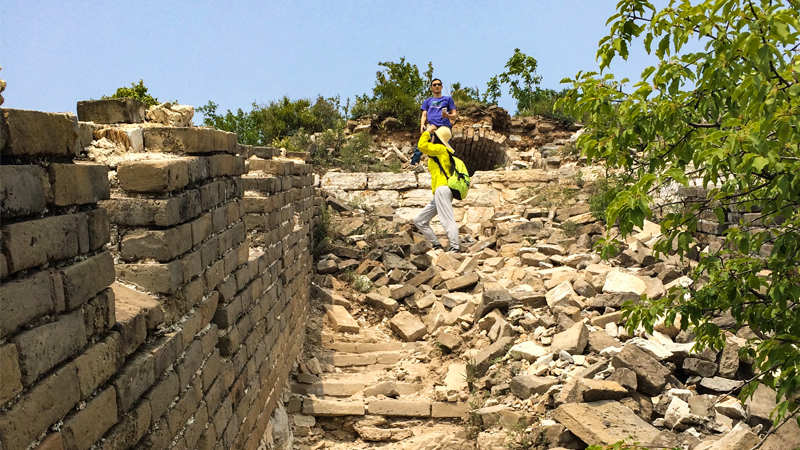 Jiankou Great Wall
Jiankou Great Wall
The Jiankou Great Wall is a totally unrestored wild section. offers an experience unlike any other. Located roughly 70 kilometers northwest of Beijing, Jiankou leaves its untamed beauty and challenging hikes to enthrall explorers.
But this section is not recommended to explore alone; you need an experienced guide in case of any accidents. Be prepared for a strenuous hike with steep climbs and uneven terrain.
6. Juyongguan Great Wall: Impressive Fortress
Juyongguan is just a stone's throw away from Beijing (around 60 kilometers, about 1-hour drive), which nicknamed the "Northern Gateway to Beijing". As one of the three most famous passes along the Great Wall (the other two passes are Jiayu Pass and Shanhai Pass), Juyongguan witnessed countless battles and historical events. You can explore the well-preserved sections standing where empires once clashed and get a glimpse into China's history.
7. Gubeikou Great Wall: Ideal Hiking Option
The Gubeikou Great Wall, located about 150 kilometers northeast of Beijing, is a historically significant section that has seen numerous battles due to its strategic position.
Unlike some of the more restored and commercialized sections, Gubeikou retains its original structure, offering a more authentic and rugged experience. This section is ideal for adventurous travelers and history enthusiasts who want to explore the less-traveled paths and enjoy panoramic views of the surrounding landscapes.
8. Huanghuacheng Great Wall: the Only Lakeside Section
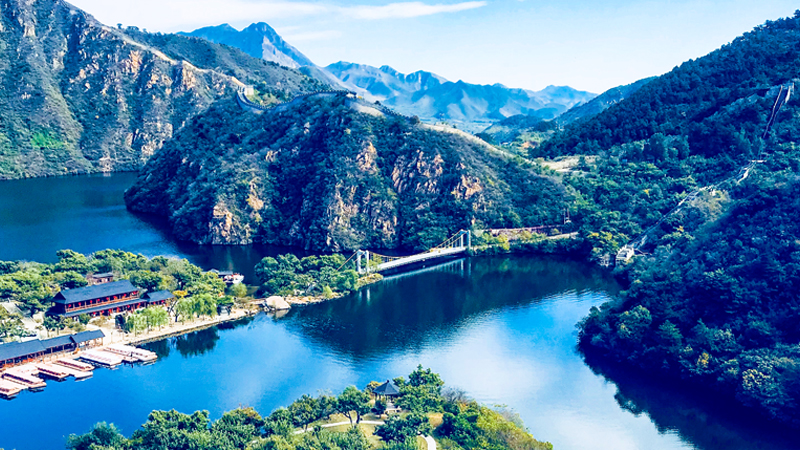 Huanghuacheng Great Wall
Huanghuacheng Great Wall
Huanghuacheng Great Wall, situated approximately 80 kilometers north of Beijing, is unique for its beautiful scenery where the Wall meets a lake. Known as the "Water Great Wall," this section is partially submerged, creating a picturesque setting that contrasts sharply with other parts of the Great Wall. Huanghuacheng is less crowded and offers a serene environment perfect for hiking and photography.
Which Section of the Great Wall to Visit in Beijing
Factors such as season, accessibility, safety, and health conditions should be taken into account when visiting the Great Wall. Our top ideas are Mutianyu and Jinshanling, suitable for most travelers with fewer crowds. The section between Jinshanling and Simatai requires more physical stamina to climb, while Mutianyu Great Wall is friendly to kids and seniors.
When is the Best Time to Visit Beijing Great Wall
For the best overall experience, we recommend you plan your trip to the Great Wall of China in Beijing during the spring (April to June) or autumn (September to November). These seasons offer the most comfortable weather conditions, fewer crowds, and stunning natural scenery, ensuring a memorable and enjoyable adventure.
If you are going to travel during the summer, you can expect lush green landscapes that are breathtaking. But it stands with heat and domestic summer holiday crowds. If you travel in winter, you can expect a unique snow view of the Great Wall with fewer crowds, but it is going to be frozing and windy.
Tailor Your Trip to the Great Wall in Beijing
Are you planning to visit the Great Wall of China in Beijing and want to have a once-in-a-lifetime experience? Just contact us at trip@odynovotours.com or send us an inquiry to tailor a trip to fit your interests and travel style. Whether you prefer the ease and comfort of a guided tour, the adventure of hiking through rugged, less-trodden sections, or the tranquility of the scenic lakeside paths, we can make it happen.
What Our Clients Say
"Great Customized Service", "Trip of A Lifetime", "Exceed All Expectations"

